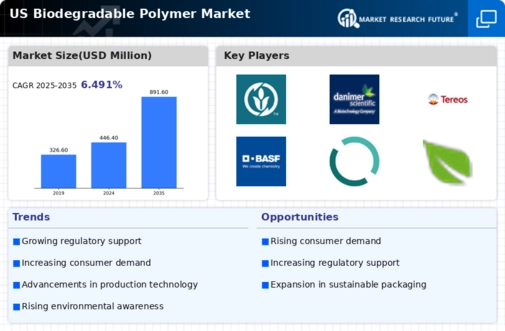The US Biodegradable Polymer Market is experiencing significant growth and transformation, driven by increasing environmental awareness and regulatory pressures encouraging sustainable alternatives to conventional plastics. In this competitive landscape, companies are striving to innovate and expand their product portfolios to meet the rising demand for eco-friendly materials. The market features a mix of established players and emerging startups, each vying for market share by leveraging advancements in technology, sustainability practices, and strategic partnerships. Competition is also intensified by consumer preferences shifting toward biodegradable options across various applications, including packaging, agriculture, and consumer goods.
NatureWorks holds a prominent position in the US Biodegradable Polymer Market, being a key player known for its focus on developing high-performance biopolymers derived from renewable resources. The company has effectively established a strong manufacturing and distribution network, which enhances its market presence and enables it to cater to diverse industrial needs efficiently. One of NatureWorks' principal strengths lies in its innovative approach, particularly through its flagship product Ingeo, which has gained traction among manufacturers seeking biodegradable solutions.
The company's commitment to sustainability and continuous investment in research and development provides a competitive advantage, allowing it to stay ahead of evolving market demands and regulatory requirements. Danimer Scientific is another significant entity in the US Biodegradable Polymer Market, recognized for its innovative biopolymer solutions tailored to various applications. The company's offerings include Nodax, a biodegradable resin that effectively replaces traditional plastics in multiple markets. Danimer Scientific has established a strong foothold in the market, bolstered by collaborations with industry partners and customers seeking sustainable packaging solutions.
The company's strengths lie in its advanced manufacturing capabilities and proprietary technology, which enhance the biodegradability and performance of its products. Furthermore, Danimer Scientific has pursued strategic mergers and acquisitions to expand its product offerings and strengthen its market presence further. Through its focus on sustainability and innovation, Danimer Scientific is well-positioned to capitalize on the growing demand for biodegradable materials in the US market.




















